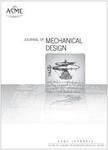版权所有:内蒙古大学图书馆 技术提供:维普资讯• 智图
内蒙古自治区呼和浩特市赛罕区大学西街235号 邮编: 010021

作者机构:Design Laboratory Department of Mechanical Engineering and Applied Mechanics University of Michigan Ann Arbor MI 48109 Center for Integrated Sensors and Circuits Solid-State Electronics Laboratory Department of Electrical Engineering and Computer Science University of Michigan Ann Arbor MI 48109
出 版 物:《JOURNAL OF MECHANICAL DESIGN》 (J Mech Des, Trans ASME)
年 卷 期:1994年第116卷第4期
页 面:1081-1088页
核心收录:
主 题:Micromechanical devices Semiconductor wafers Boron Mechanical engineering Linkages Dimensions Integrated circuits Micromachining Electronic circuits Microelectromechanical systems Circuits Compliant mechanisms Sensors Motors Silicon Design Manufacturing Engines
摘 要:An attempt has been made to summarize some of the important developments in the emerging technology of microelectromechanical systems (MEMS) from the mechanical engineering perspective. In the micro domain, design and fabrication issues are very much different from those of the macro world. The reason for this is twofold. First, the limitations of the micromachining techniques give way to new exigencies that are nonexistent in the macromachinery. One such difficulty is the virtual loss of the third dimension, since most of the microstructures are fabricated by integrated circuit based micromachining techniques that are predominantly planar. Second, the batch-produced micro structures that require no further assembly, offer significant economical advantage over their macro counterparts. Furthermore, electronic circuits and sensors can be integrated with micromechanical structures. In order to best utilize these features, it becomes necessary to establish new concepts for the design of MEMS. Alternate physical forms of the conventional joints are considered to improve the manufacturability of micromechanisms and the idea of using compliant mechanisms for micromechanical applications is put forth. The paper also reviews some of the fabrication techniques and the micromechanical I devices that have already been made. In particular, it discusses the fabrication of a motor-driven four-bar linkage using the boron-doped bulk-silicon dissolved- wafer I process developed at The University of Michigan s Center for Integrated Sensors and Circuits.